Original link: https://weichen.blog/hawaii/
Some time ago, I went to the Big Island of Hawaii and stayed there for a month. This article shares my seven insights (and some photos) with you.
1. Concept #
Speaking of Hawaii, people’s impressions are sunny beaches, relaxing by the sea with coconuts in their hands. But the reality has many nuances.
I live on the east side of the Big Island and the precipitation and cloud cover is much higher than the west side. I’ve been to Volcanoes National Park many times, hoping for good weather, but no matter how good the weather is outside, whenever I get close to the volcano, even within a 5 minute drive, it starts pouring rain.
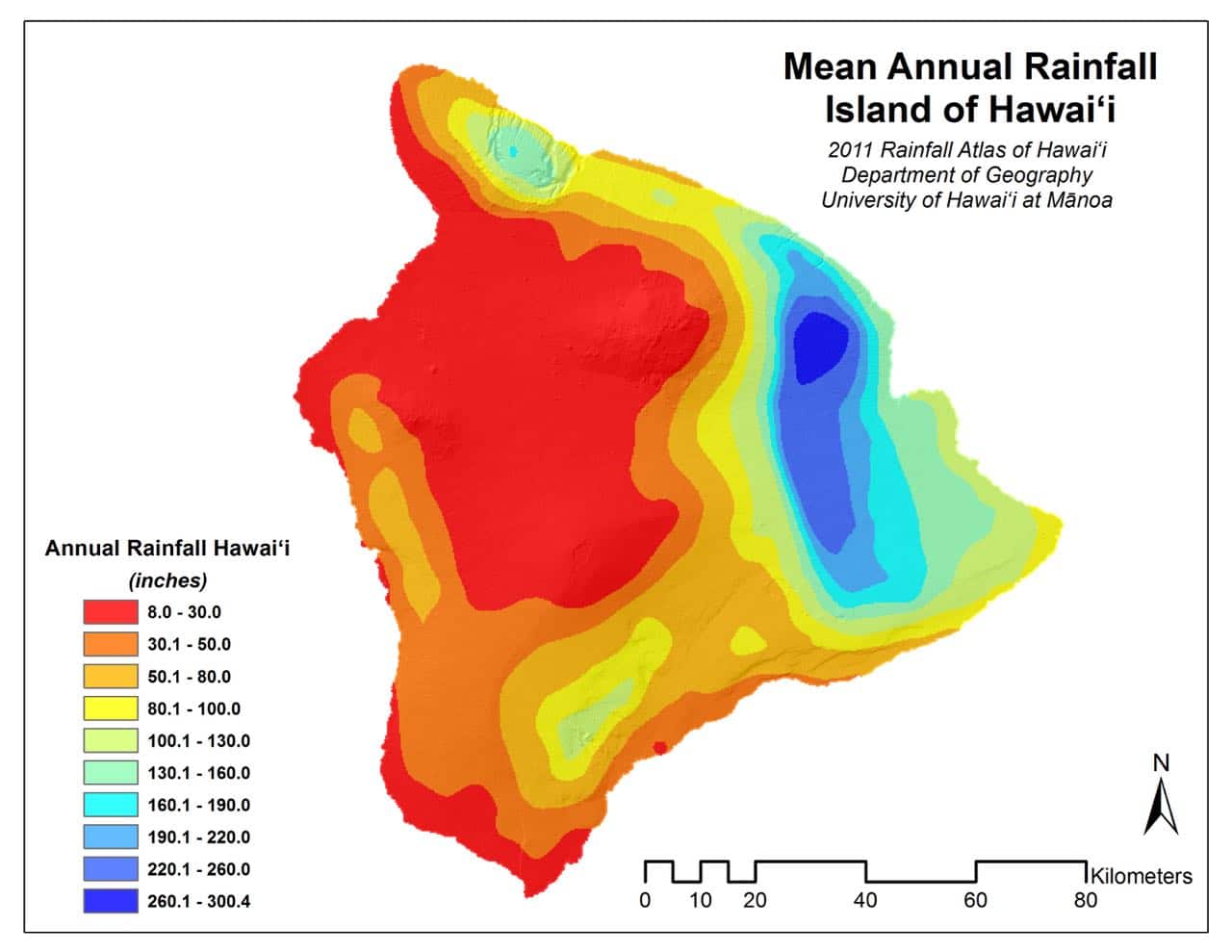
(Precipitation distribution map of the Big Island of Hawaii. The area of the Big Island is smaller than Beijing, similar to Tianjin, but it has many microclimates. Even at the same altitude, the precipitation in the west and east can be more than ten times different.)
The locals told me that many wealthy people would want to buy a house there, but visiting the island and living on the island are two different things. In addition to the unpredictable climate, life is also very different from that in the United States. For example, some things are strangely expensive, shopping and travel are not so convenient, and customs are also different.
2. Changes #
During a month on the island, the only constant is change.
In a 20-minute drive, you can drive from the lush tropical rainforest to the grassland with a drier climate.
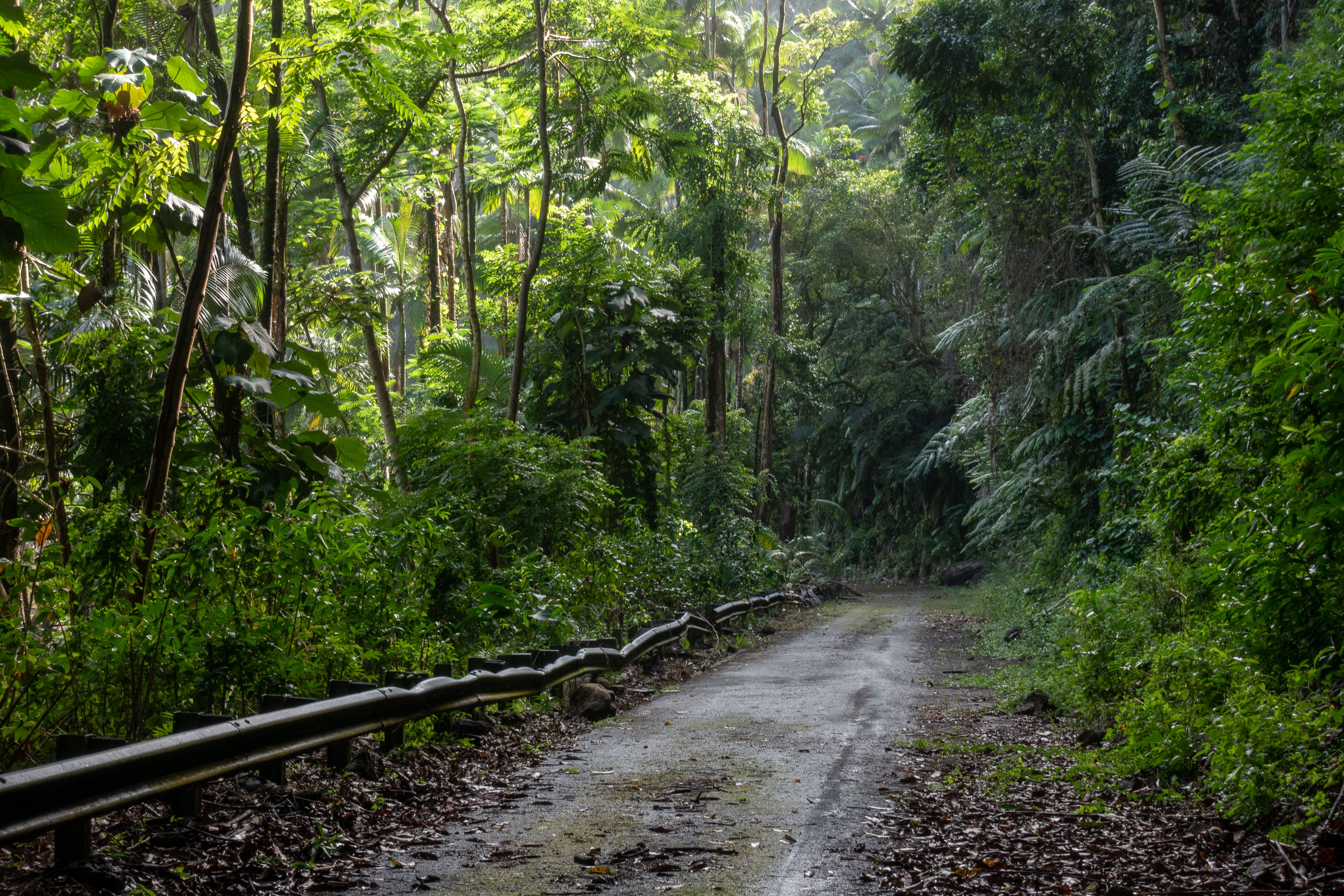
(An abandoned road near my residence. Every time I walk here, surrounded by greenery, I feel like recharging my body.)
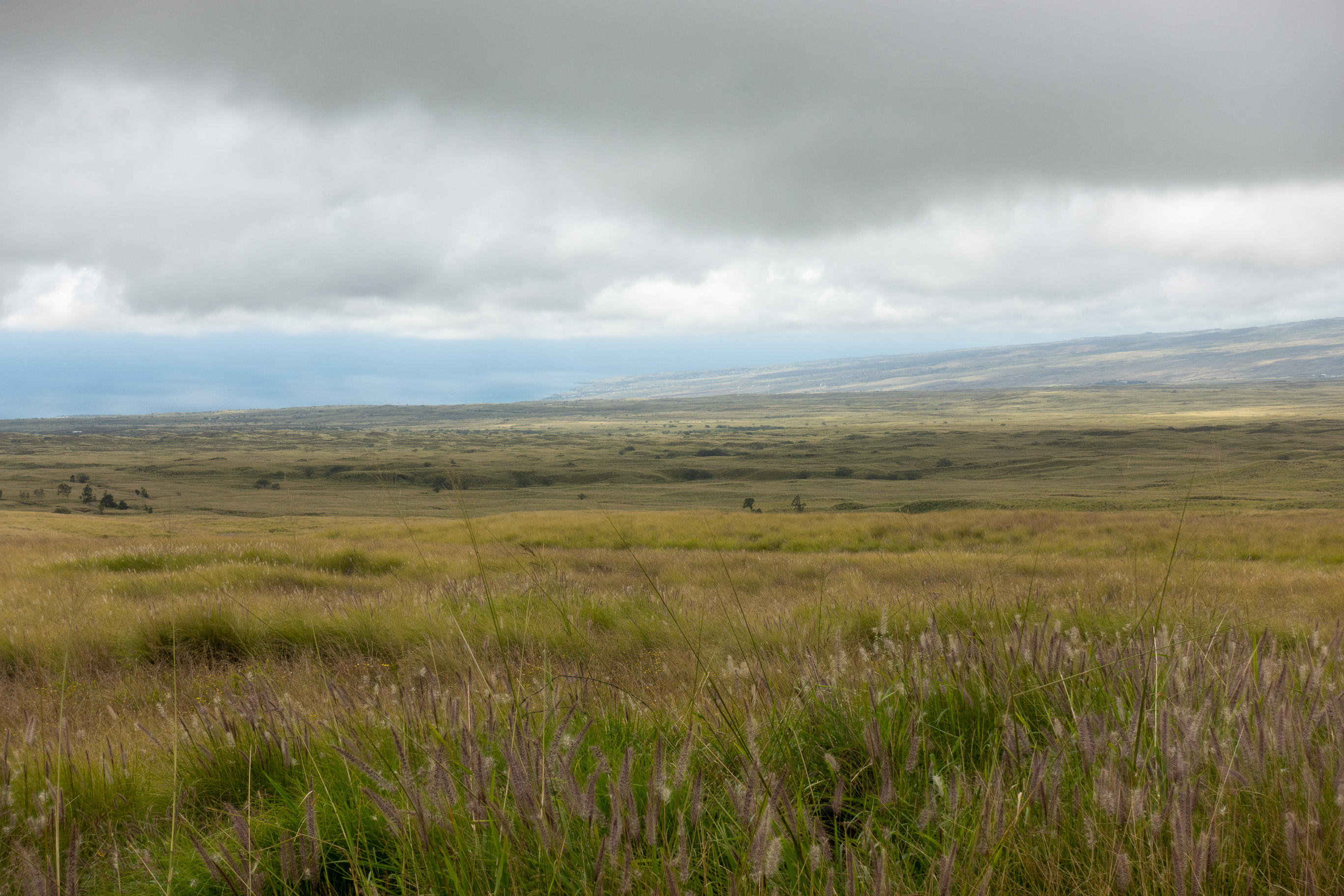
(The grassland on the west side of the big island. The place where I stand is at a higher altitude and the clouds are dense, but I can see the sun shining on the sea in the distance.)
In addition to the spatial variation, the temporal variation is even more obvious. There was some sunshine for the first few days of my arrival, and then two weeks of non-stop rain (a climate phenomenon known as ” Kona lows “), frequent torrential downpours, landslides and fallen trees.
After that I thought it was over, but then the Bureau of Meteorology issued another warning for strong winds and huge waves. One night the strong wind made me sleepless, so I got up and closed the windows, but because the house was relatively old and the windows were rattling, I had to open them again. Not to mention that one night, a 4.5-magnitude earthquake occurred on the south side of the island, and the violent vibration of the wooden house woke me up.
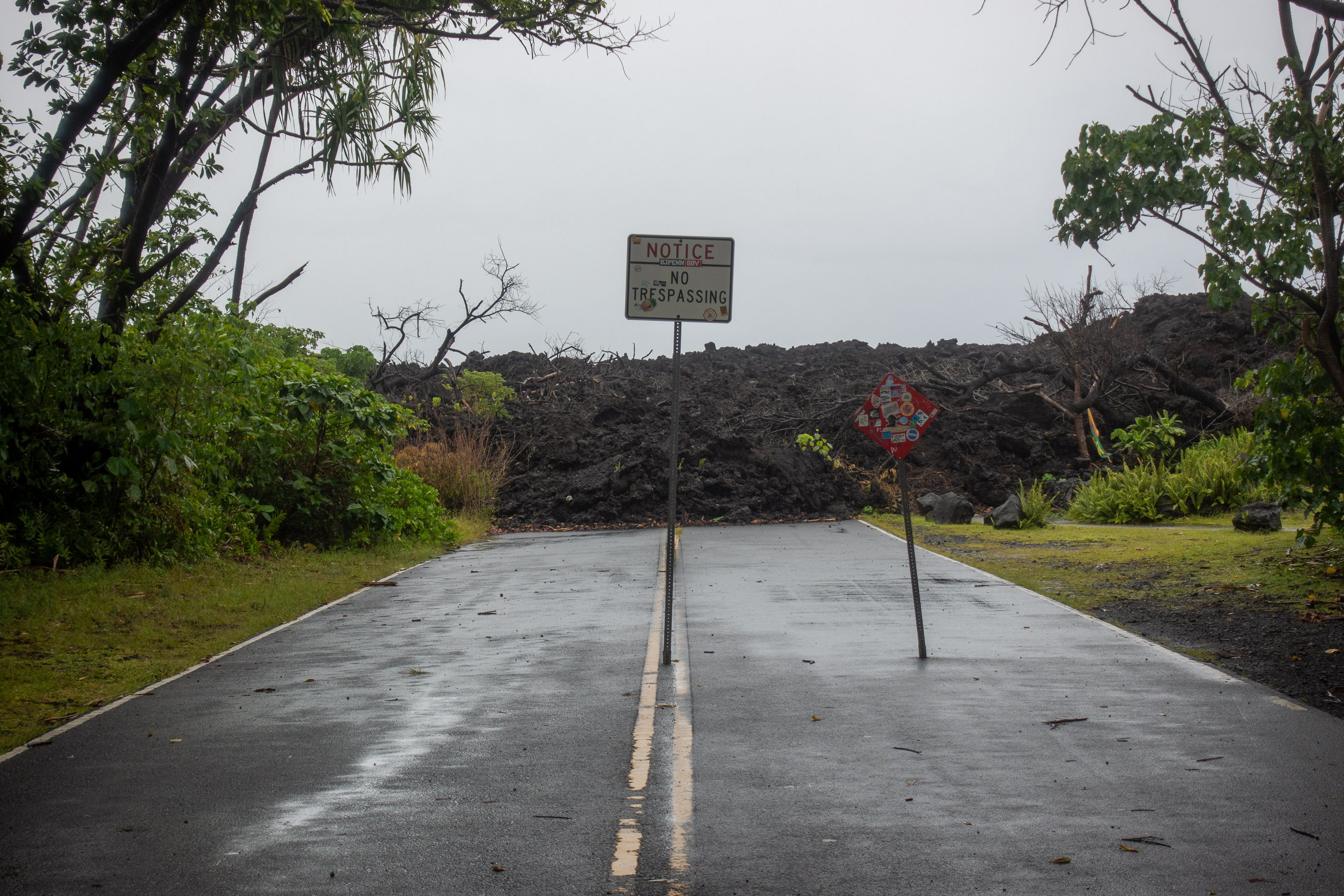
(Perhaps most unique is the volcanic impact, where the road has been swallowed by lava.)
3. Adapt #
Traveling is a constant examination of one’s own preconceptions, expectations and habits. You can be stubborn, you can resist, but reality will find ways to challenge you.
A tourist who lived next door to me complained, “I came here to bask in the sun, but it’s raining non-stop!” Later, she couldn’t bear it anymore and changed her ticket to leave early. The strange thing was that the first The sun came out the next day.
Another friend who traveled alone thought that many people of the same age could travel together, but found that this was not the case. She quickly changed tack and joined tour groups led by locals. Unexpectedly, the locals were very enthusiastic about her. After the tour group ended, they invited her to participate in other activities for free and became friends with her.
Of course, acclimatization doesn’t mean everything is going well, like the five helicopter tours she went on that were all canceled due to bad weather, but she doesn’t seem too upset either.
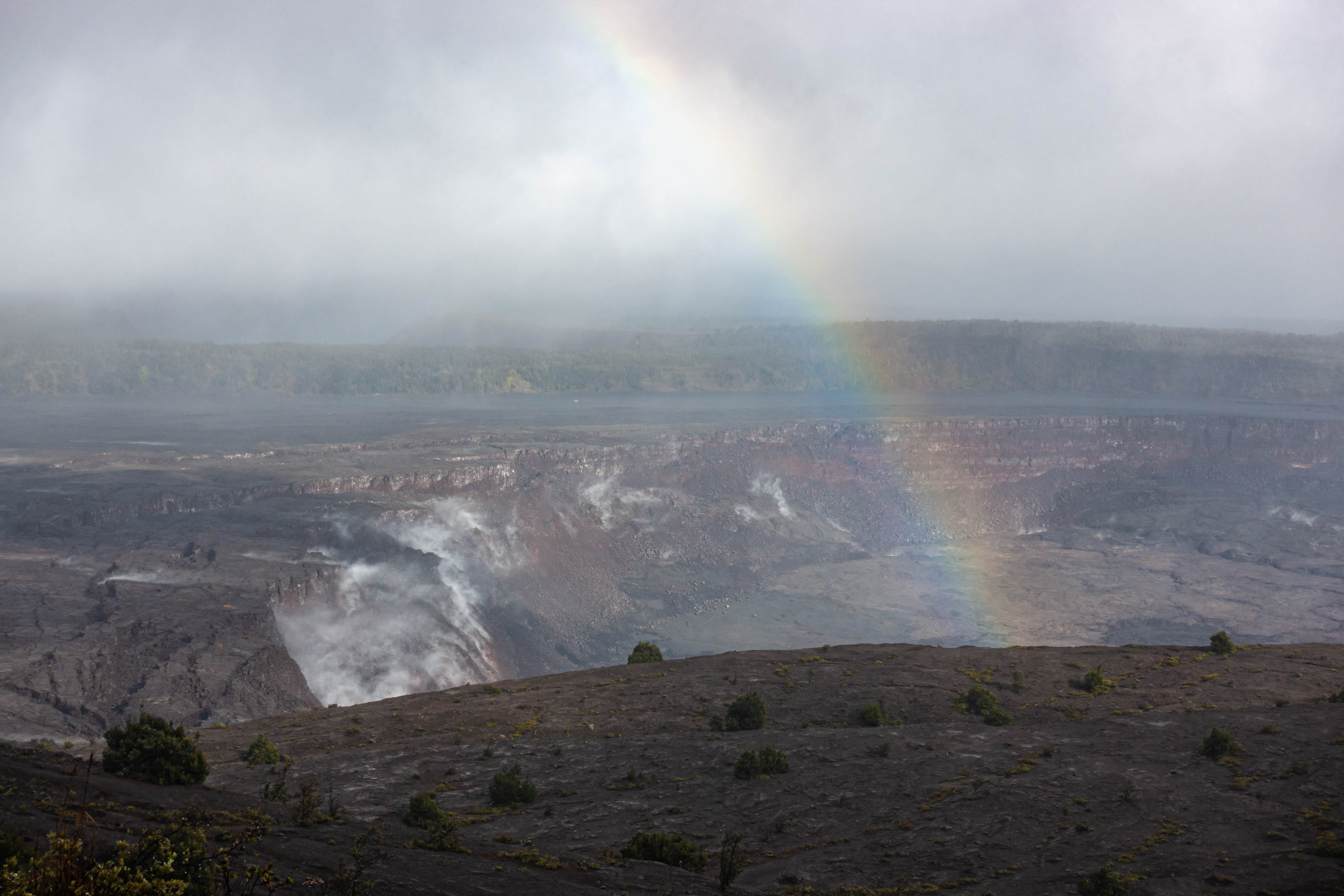
(rainbow over the crater)
4. Live in a bubble #
English uses “live in a bubble” to describe people who are unwilling to accept different views and are isolated from the world. Even in a new environment, it is easy to live in old habits—doing familiar things and eating familiar foods.
I heard that some people couldn’t stand the humid climate and bought dehumidifiers, and closed the windows all day, but these people moved out within a year.
The east side where I live is relatively unaffected by tourism, and to the west, resorts follow resorts. I heard from another traveler that some of her friends like to stay in resorts, sometimes going to the beach in Mexico, sometimes in Hawaii. She was a little puzzled: “But the resorts in Hawaii look exactly the same as those in Mexico!”
There is a good saying that describes the difference between tourists (tourists) and travelers (travelers): “Travelers don’t know where they are going, but tourists don’t know where they have been.”
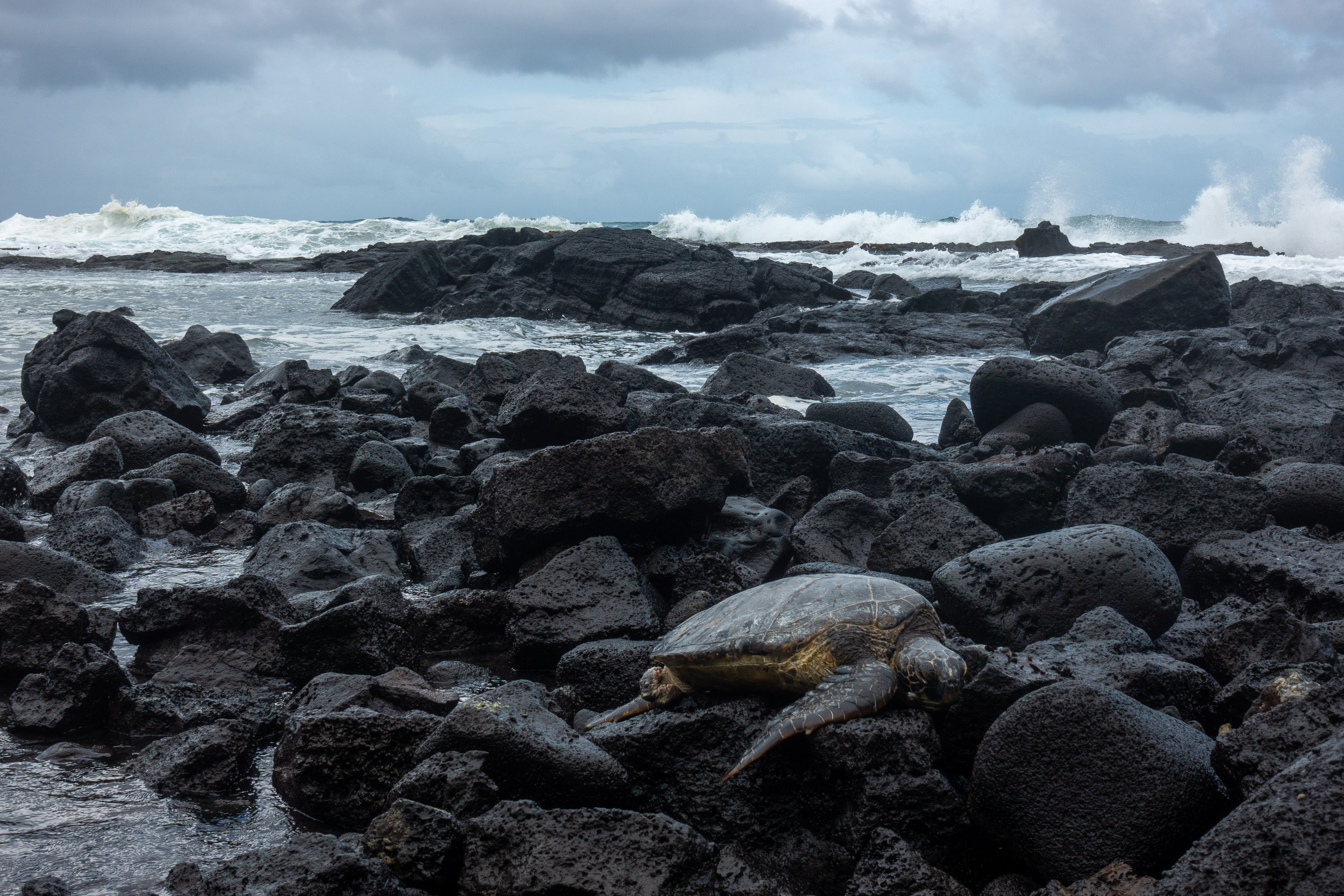
(a sea turtle escaping a big wave resting or laying eggs on the shore?)
5. Virtual life #
Islanders are mostly physically active, and I just realized that most of the things I usually do are virtual (reading, writing, programming). Even things like washing dishes and clothes are done by machines for me.
I didn’t know what a coffee cherry looked like, or how to pluck a coconut from a tree, or how to weed, or grow vegetables. I also live in a bubble.
6. Go to the source #
The owner of the homestay is a descendant of Japanese immigrants, a buddhist, who has been operating the homestay for more than 30 years. She has a unique charm and doesn’t always answer my questions.
Sometimes I used to open my mouth to ask without much thinking, at this time she would stop, look at me and say, “Weichen, I don’t know, you can find the answer yourself.”
Sometimes, she would give me clues: “When people come here to sell vegetables next Tuesday, you go find Joey, he’s an expert.”
Notice she didn’t say anything. She didn’t say: Google it, or find a YouTube video to watch.
I remembered that Leonardo Da Vinci also learned in this way. In his notebook he wrote:
Ask the arithmetic teacher to tell you how to obtain a square with the same area from a triangle; ask the artillery sergeant Giannino to explain the structure of the walls of the Ferrara Tower; What about walking uphill; get a hydraulics teacher to tell you how to fix locks, canals, and mills in the Lombard way; get Giovanni the Frenchman, who promised to explain to me how the sun is measured… — Leonardo da Vinci, Walter Isaacson
7. Learning on paper #
The people I met on this trip are different from those I usually meet. Their life experiences are much more diverse and rich.
Talking to them, I found that it was easy to say “I read in a book that…” when they talked about their own experiences. Maybe writing can help me understand a little deeper, but it still can’t compare with what I have experienced.
Reminds me of a line from the movie Good Will Hunting:
You’re just a kid and you have no idea what you’re talking about.
If I asked you about art, you might bring up the rough theories in art books. You know a lot about Michelangelo, his political ambitions, him and the pope, his sexuality, all his works, right? But I bet you can’t tell the smell of the Sistine Chapel, you haven’t actually stood there looking up at its beautiful ceiling.
If you ask a woman, you will probably tell the fallacy of personal convenience. You may have slept a few times, but you can’t tell the feeling of waking up with a woman, the taste of real happiness.
You are young and tough, if you ask about the war, you will probably throw out Shakespeare’s famous saying “Let’s go to the battlefield, my dear friend…”, but you have never been close to the war, and you have never held your friend’s head on your knees, Watch him ask you for help, breathe his last breath…
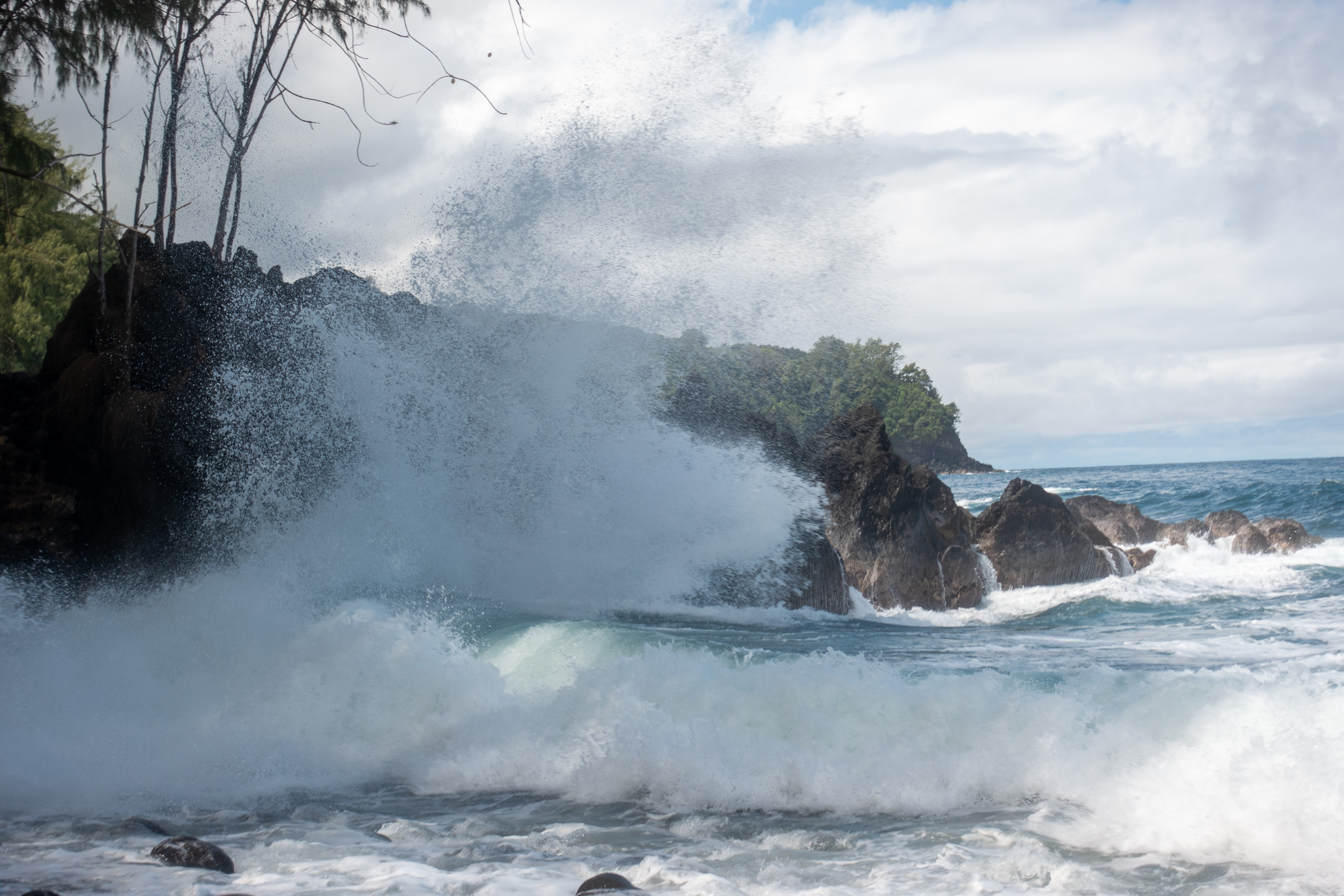
(Laupahoehoe Beach)
We use language to communicate ideas and feelings, but don’t forget that language is just a tool, a dimension. Reality is much richer than words can express.
This article is transferred from: https://weichen.blog/hawaii/
This site is only for collection, and the copyright belongs to the original author.